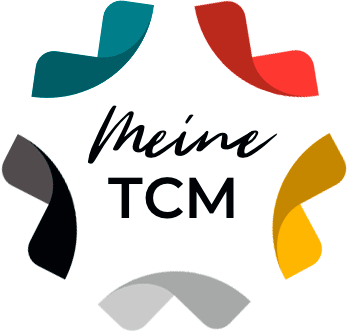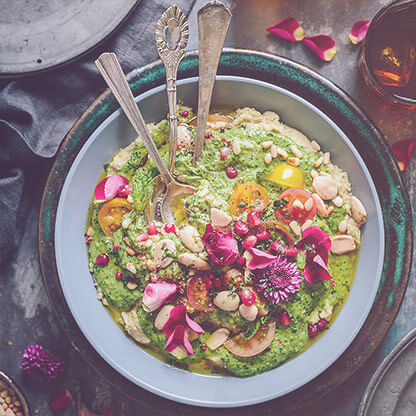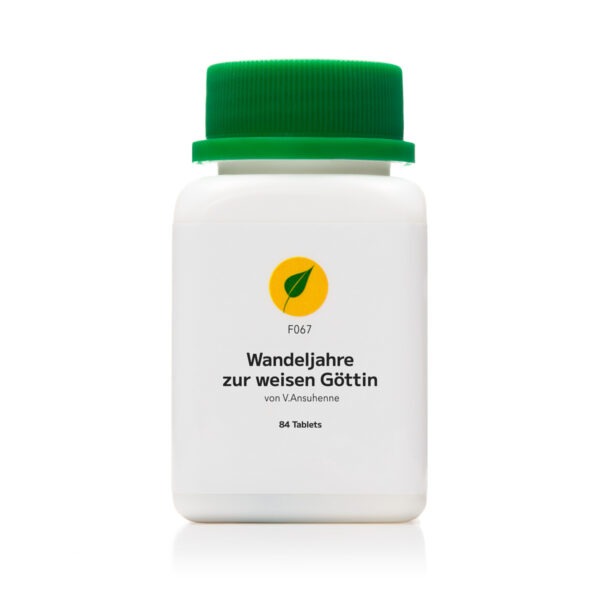Hot flashes
... Acupuncture points against hot flashes

Wolfgang's herbs tips
Application:
"Women's mixture", for complaints BEFORE, AT and AFTER the period (take for at least three cycles), regulates menstruation, for menopausal symptoms, as an alternative to W19 (Rehmannia mixture)
240 tablets
Helps with:
Menopausal symptoms such as spontaneous sweating, feeling hot, insomnia, dry skin and dry mucous membranes.
The special thing about Ansuhenne's recipes:
Vital mushrooms of TCM are also used in the mixtures.
Dietary supplement according to Traditional Chinese Medicine. Contains only herbs available without prescription.
84 tablets


With the Training calendar you learn the exercises step by step. 15 workouts provide for variety.
This Meridian yoga exercises are also available for Beginners easy to learn.

TCM background information

SI 03 "Back river" - Houxi
Key point of the handlebar vessel, distant point for the neck
- Location:
Several folds appear on the little finger when the fist is clenched. The point is located at the proximal (close to the body) fold, behind the base joint of the little finger.
- Helps with:
Cramps, tremor, neck stiffness, dizziness, headache, bilateral back pain, clears the mind, gives clarity to what is important/unimportant.
Comment:
In combination with Bl62, the point Dü03 activates the handlebar vessel and therefore has a positive effect on the entire spine, both upper and lower. This applies to both chronic and acute problems, but only if the pain is on the spine or in the lower paravertebral area (both sides) of the back.
SI 08 "Sea of the small intestine" - Xiaohai
Relieves pain in the neck and shoulder area
- Location:
Between the ulnar process of the elbow (olecranon ulnae) and the tip of the medial (inner) epicondyle of the humerus, in a depression
- Helps with:
Elbow pain, shoulder joint pain, shoulder blade (scapula) pain, neck problems, tinnitus, hearing loss.
Comment:
In addition, the point Dü08 also has an effect on the mind and can therefore be used in addition to the points on the heart meridian, in case of anxiety.
Ht 03 "The little sea" - Shaohai
This is the so-called "good mood" point
- Location:
At the medial end of the elbow crease, above the medial (inner) epicondyle when the elbow is flexed.
- Helps with:
Headache, dizziness, stiff neck, elbow pain, forgetfulness, sleep disturbances.
Comment:
This point is used mainly for the elimination of cardiacFire which is why it has a calming effect on the psychological level and can therefore also improve depressive moods and simply has an emotionally relaxing and stabilizing effect. That's why I like to call it the "good mood point".
Ht 07 "Gate of the Spirit" - Shenmen
This is one of the most important points to influence the psyche
- Location:
The point is located in front of the pea bone in a depression. This is located on the side of the little finger, at the level of the inner wrist crease.
- Helps with:
Restlessness, irritability, depression, anxiety, apathy, sleep disturbances, memory impairment, mood swings, heart pain.
Comment:
This item is used mainly to strengthen the cardiacBlood drawn upon. Therefore, it is used for all blood deficiency symptoms such as insomnia, forgetfulness, anxiety and palpitations.
It is the best point to calm the mind in case of great restlessness, worries and stress. Holding this point in bed at night is a perfect way to quiet the mind and then sleep deeply and soundly.
Lv 03 "Big meeting" - Taichong
Source Point of the liver meridian, most important point on the liver meridian
- Location:
on the dorsum of the foot between the 1st and 2nd toes, at the end of the "groove".
- Helps with:
Migraine with sensitivity to light, menstrual problems, nausea, abdominal pain, general tension relieving, constipation.
Comment:
This is an important point to eliminate Fullness in the liver, it is somewhat milder in effect than Le02.
It has a special effect on cramps and increased muscle contraction.
It has a profound and calming effect on the psyche and is an important point for very tense, impatient and stressed people. This function is lacking in the point Le 02. For this purpose, the point is often used together with Di4. Together they belong to the most important acupuncture points and are called the "Four Gates".
Lv 08 "Springs at the bend" - Qquan
Toning point of the liver meridian
- Location:
with the knee bent at the inner end of the knee joint crease
- Helps with:
Knee pain, abdominal pain, scanty urine, diarrhea, dizziness, pain in the genital area, impotence, sleep disordersl
Comment:
This item has as its main indication Humidity from the lower of the 3Warmers to be eliminated. Typical symptoms would be urinary retention, cloudy urine, burning during urination, fluor vaginalis.
Gb 34 "Spring at Yang Hill" - Yanglingquan
Master point of the musculature
- Location:
In the dimple in front of and below the fibular head
- Helps with:
Nausea, nausea, constipation, bloating, pressure in the chest and flanks, knee and hip problems, hemiplegic headache, migraines
Comment:
GB 34 is a very important acupuncture point. It has above all a liberating effect on the liver qi flow and thus helps with the frequently encountered liver qi stagnation.
Depending on where the jam is, it can be combined with other points.
If the congestion is in the upper abdomen, add CV 12. If the congestion manifests itself more in the lower abdomen, add KG 6.
It is also a so-called master point and that is for the musculature. Whenever there are spasms or other tensions in the muscles, this point is helpful.
Gb 41 "Flowing Tears" - Zulinqi
Point that opens the belt vessel
- Location:
In a depression distal (far from the body) from the 4th and 5th metatarsal bones.
- Helps with:
Balance problems, dizziness, feeling of fullness in the chest, headaches, menstrual problems, back pain in the lumbar region.
Comment:
The girdle vessel is one of the 8 special meridians and does not run like the other meridians from top to bottom, but like a belt, at waist level, around the body. It connects the front of the body with the back and thus also helps with back problems.
It is also the master point for all kinds of joint diseases and is therefore popular for joint ailments.
GV 20 "Heaven Pass" - Baihui
Gathering of all yang letti pathways
- Location:
on the highest part of the head
- Helps with:
Headache, drowsiness, neck tension, restlessness, forgetfulness, tinnitus, balance disorders, dizziness.
Comment:
This is the intersection of all yang meridians, i.e. those channels that move the yang towards the head. Thus, it has a strong effect on the rise of Yang and thus a clearing function for the mind.
It has a mood-lifting effect, especially in depressive states, and connects us with the "heavenly energy", as it is called in Qi Gong.
PaM-3 "Seal Hall" - Yintang
Master point for headaches and stuffy nose
- Location:
In the middle between the eyebrows, at the root of the nose, at its deepest point.
- Helps with:
Eye diseases, nasal congestion, insomnia, headache (especially in the forehead area), dizziness, sinusitis,
Comment:
This point is called the master point for headache and nose. Together with Bl 02 it has an even stronger effect. But it also has a strong mental calming effect.
This point is also called the upper dantien. Dantien means as much as "Sea of Energy. The lower dantien is the KG 6 point, the middle dantien is the CV 17 point and the upper one is the PaM-3 point.
PaM means: point outside the meridians. These are points that are very effective from the millennia-old tradition, but just do not lie on any of the classical meridians.
There are a total of 48 such extra points, as they are also called.

The word Qi Gong consists of 2 syllables - Qi and Gong. The Chinese term "Qi" can be translated for us most likely by "life energy". But it contains more than this. It also means breath and air. In Chinese medicine, Qi is considered to be the invigorating force that flows through all living things. However, Qi is not only inside the body of a living being, but also outside. Qi also shows itself to us in nature. Thus animals, flowers and trees are flowed through by Qi. Qi is the living force that is inherent in everything and that makes life possible.
The Japanese call this force "Ki". In India it is called "Prana". It always means the same thing - the power and energy that is inherent in everything and keeps us alive. In Chinese medicine, health is only possible when the Qi in our body is pure, not polluted and can flow freely.
Due to bad living habits, in the course of time, energy blockages can occur in the body system and as a result, diseases can manifest, which can be physical or psychological in nature. Generally speaking, we can say that a living person has Qi throughout the body.
The word "gong means roughly "body work" or "success through perseverance and practice". Therefore Qi Gong is called "Work with the life energy". We learn to improve the flow and distribution of Qi in our body through movement and concentration to strengthen our health and bring body and mind into harmony. At the same time we learn to stand correctly, between heaven and earth. This significantly improves posture and many aches and pains disappear on their own.
Qi Gong is a holistic healing system with a long tradition, which has been continuously developed until today. It includes health-promoting postures, movement, self-massage, breathing techniques and meditation. Through these various exercise methods, Qi is supposed to be collected and stored in the body, like in a reservoir. The goal is to expel the impure Qi and absorb fresh pure Qi.
Qi Gong is not a medicine that is prescribed for a limited time, but rather it should be practiced daily. In this regard, 20 minutes of daily practice is enough to improve health and one's well-being to a great extent.
Anyone can practice qigong. There are exercises for every age and every state of health. The exercises can be practiced standing, sitting, lying down or walking. So even physically challenged people can easily practice Qi Gong and improve your health in a sustainable way.
You are interested in this topic?
Then you can find even more information about it here.
You want to learn Qi Gong - easily from home?
With our modern Qi Gong online courses this is easily possible!

The herbal therapy is called "the queen of TCM" in traditional Chinese medicine. This underlines its high status. Herbs form an important foundation of TCM and have a profound effect on the human organism. They can replenish deficiencies, expel states of fullness, warm or cool the body. They are generally referred to as herbs. Nevertheless, minerals are also used in the recipes.
Herbs are usually prescribed after a thorough diagnosis by a doctor. In this diagnosis, in addition to a conversation, attention is paid to the pulse, tongue and overall appearance of the person. Nevertheless, there are herbal mixtures that have proven themselves over the centuries for various problems.
We have made suggestions for all clinical pictures for such proven recipes. Nevertheless, in many cases it may be necessary to consult a doctor or therapist. Based on the individual situation, this person can recognize how the energetic situation really is at the moment and, based on this, recommend the optimal herbal mixture. Of course we do not have this possibility, because we cannot meet you personally. Nevertheless, if you have any questions, please feel free to contact us and we will try to help you as much as possible.
For many disease patterns there are 2-3 herbal suggestions. The first suggestion is always the one that from my experience is suitable for most people. However, if there is no reaction, then try the second mixture that is suggested to you.
However, herbal therapy needs some patience, because in most cases it works slowly and subtly. In return, there are no side effects and the effect is very long-lasting.
If you want to learn more about herbal therapy then just look at
Chinese herbs to.













